
The incidence of diabetes is increasing day by day.The global prevalence of diabetes is estimated to increase to 5.4% by the year 2025. WHO has predicted that the major burden will occur in developing countries.
Treatment of illness and maintenance of health/well-being using herbal medicines is the oldest and most popular form of healthcare practice known to humanity that has been practiced by all cultures in all ages throughout the history of civilization.
In China, diabetes is not as prevalent as elsewhere.World-wide estimates of diabetes incidence are on the order of 1.0%, placing China among the group of nations with low incidence and the U.S. in the high incidence category.
Although the incidence of diabetes is far lower in China than in the U.S., predictions are that China and the rest of southeast Asia will rapidly become the world’s main site of diabetes cases (by the year 2025) due to the combined high population and change in lifestyle as the countries modernize.
Recent studies have shown that more than 90% of Type 2 diabetes is avoidable through lifestyle changes, not drugs and surgeries!
Chinese food therapy and herbal therapy is a great example of a positive lifestyle change that can help to prevent a person who is diagnosed with pre-diabetes.15 to 30 % of people with pre-diabetes will develop diabetes within 5 years!
Consuming whole foods is vital in the prevention and successful reversal of this condition. Sugars and white flour, rice, or potatoes should be replaced with whole grains; fruit juices should be replaced with whole fruit sparingly; and vegetables should consumed with wild abandon.
Protein consumption is vital in maintaining level blood sugar levels and is best obtained through nuts, eggs, beans or legumes, and fish; keep meat and cheese, and greasy food consumption to a minimum.

When treating diabetes, Herbal medicine can assist the body to regain its normal healthy functioning. Pre-diabetic conditions can often be fully reversed, while type 2 diabetics have a chance of reversing their condition when caught early on.
Those who have chronic type 2 diabetes or type 1 diabetes can find that herbs help to moderate blood sugar levels and help to provide an improved quality of life.
The World Health Organization (WHO) has listed 21,000 plants, which are used for medicinal purposes around the world. Among these 2500 species are in India, out of which 150 species are used commercially on a fairly large scale.
India is the largest producer of medicinal herbs and is called as botanical garden of the world.There are many herbal remedies suggested for diabetes and diabetic complications. Medicinal plants form the main ingredients of these formulations.
The use of alternative medicines for the management of diabetes is widespread in the Indian subcontinent, mostly in the form of so-called nutraceuticals (eg, capsules made of fenugreek or bitter melon extract).
Ayurveda disease management entails a prescription of personalised diet,healthy lifestyle and herbal remedies . Each treatment plan is customised to the individual patient and to the type and stage of diabetes.
It is important to keep in mind that classic Ayurvedic medicines are usually polyherbal formulations. The combined effect of the phytochemical constituents of various herbs is responsible for therapeutic efficacy, rather than the actions of a single active ingredient.
The most common and effective antidiabetic medicinal plants of Indian origin are listed below.All these plants are a rich source of phytochemicals.
Chinese Herbs And Diabetes
Herbal remedies come in various delivery systems: you can take the natural plants and herbs according to the way they are prescribed – powdered or cooked or mixed with water; or you can take various herbal remedies that come in capsule form. If you are finicky about taste and smell you may well prefer to take capsules which are easy to swallow and are made from refined extracts.
Click Here For Free Ebook called”Natural Herbs 101″.Learn about growing your own herbs in the privacy of your home and using them in a variety of cooking.
Science has been investigating many of the herbs used in the Chinese medicine formulas. Studies have recently found that berberine has insulin-sensitizing effects. Many other Chinese herbs have been used successfully for thousands of years to treat and reduce the associated symptoms of diabetes.
A simple tea that can be made at home can help some of the symptoms of diabetes. Simmer 120g of dried Chinese yam (shan yao) in water and drink throughout the day.Nine flavour tea pills are available from Chinese medicine practitioners. This remedy helps the adrenal glands and kidneys, and addresses symptoms like heat, lower backache, and excessive thirst and urination.
Beneficial foods that clear heat and nourish the body’s fluids include spinach, turnips, pears, soybeans, millet, Chinese yam, water chestnuts, mung beans, and sea cucumbers. Avoid hot and spicy foods and alcohol.
Tianqi is widely used in China for the treatment of type 2 diabetes. It includes several herbs that have been shown to lower blood glucose levels and improve blood sugar control after meals. The main herb in Tianqi is Acanthopanax notoginseng, which has anti-inflammatory properties and is said to ‘educate the blood’ – broadly meaning it helps maintain healthy cardiovascular function.
Several other Chinese and oriental herbs have been found to control blood sugar levels as well as or better than pharmaceutical drugs.
Jiaogulan (Gynostemma pentophyllum) can improve insulin sensitivity and, when taken for 12 weeks by people with type 2 diabetes, has been shown to lower fasting blood sugar levels to within the ‘normal’ range.
Korean red ginseng (Panax ginseng) has a long history of use for lowering blood sugar levels. In one study, it was found to reduce the rise in blood sugar after a meal by an impressive 27 per cent, compared with placebo.
Siberian ginseng (Eleutherococcus senticosus) may have even more powerful anti-diabetic effects than red ginseng. In a study that compared both herbs against placebo, Siberian ginseng lowered both fasting blood glucose and after-meal blood glucose levels more strongly than did red ginseng.
Bitter melon (Mormodica charantia) improves insulin sensitivity and outperformed the now-banned drug Avandia (rosiglitazone) in a study of its effectiveness in managing diabetes and its complications.
Fenugreek (Trigonella foenum-graecum) has natural active ingredients similar to the drug Metformin and in one clinical trial was shown to reduce fasting blood sugar just as effectively and in the same time scale as the drug.
Bottle gourd (Lagenaria siceraria) contains a bitter juice that a recent study has shown to lower blood sugar, damaging kinds of cholesterol and blood fats, while improving liver and kidney function.
Consume garlic and onions in large quantities. These flavorful foods help to lower “bad” LDL cholesterol and raise “good” HDL cholesterol and prevent heart disease.
People with diabetes tend to have a greater risk of heart disease because the lack of insulin prompts fat to float throughout the bloodstream longer and in higher levels than normal. Eat a diet abundant in vegetables and moderate in sweet fruits to get a rich array of antioxidants such as vitamin C, the carotenes, and flavonoids. Antioxidants help prevent fats from oxidizing and causing damage to artery walls, which can lead to plaque buildup and heart disease.
Herbal medicine is an important component to the treatment of diabetes. Different formulas may be effective for different people, so practitioners may try several different approaches.
Antidiabetic Medicinal Plants Of India
Anti-diabetic Plants in India and Herbal Based Anti-diabetic Research
It is important to note here that there is yet no effective cure for Diabetes and available drugs and insulin therapy used for the management of the disease are associated with several undesirable side effects .
The undesirable side effects and high cost of anti-diabetic drugs led to the search for medicinal plants that exhibit a hypoglycemic property.
For more great Health and Nutrition Tips refer to the website positivehealthwellness.com.
To get results you must understand how herbs work. Their use requires time, patience and knowledge about the disease you are attempting to cure. Herbs have different potency and purity, and that is not always easy to determine. They have different effects for different people.
Experimentation is key to obtain results. Most importantly is not to give up on them because results are not seen immediately.
Below is a list of the most commonly known medicinal plants of India with anti diabetic properties.
1.Babul (Acacia arabica)
Acacia arabica has been reported to be effective against a variety of diseases including diabetes, skin disease and cancer. The fresh plants parts of Acacia arabica is considered as astringent, demulcent, aphrodisiac, anthelmintic, antimicrobial, antidiarrhoeal, with good nutritional value in Indian traditional medicine system.
Commonly known as babul, kikar or Indian gum Arabic tree has been recognized worldwide as a multipurpose tree.It is a moderate-sized, almost evergreen tree with a short trunk, and a spreading crown. It is widely distributed throughout arid and semi-arid zones of the world.
The bark skin, leaves, seeds, pods and the gum of Acacia arabica are used for medicinal purpose. The plant is used internally as well as externally.
Oral administration of cold water extract of Acacia arabica bark to diabetic and normal rats at a dose of 400 mg/kg body weight resulted in significant reduction of blood glucose, cholesterol and triglycerides. Phytochemical investigations found that phenolic compounds are presents in Acacia arabica extracts. The cold water extract of Acacia arabica was found to reduce blood glucose level to its normal level within seven days.
Acacia arabica is a good antibacterial agent. A clinical trial report implies the presence of substances in Acacia gum which, compared with ordinary gum, primarily inhibit the early deposition of plaque.Gum obtained from Acacia / Babul is used to get rid of the bacteria in the mouth that is known to cause periodontal disease.
Acacia / Babul gum serves as a demulcent – soothing mucus membranes. Due to this effect, it is often applied to the affected skin so as to treat scrapes and minor wounds. It has a very good healing affect and is good for wounds.
It is also good for curing common cold. Acacia is helpful in the treatment of cold symptoms as well as relieving sore throat that is associated with cold and cough.
Acacia / Babul is useful to treat dysentery, diarrhea & other intestinal ailments. Acacia flowers are largely useful in treating nausea, a hangover, and vomiting. It is also know to treat intestinal worms and get rid of them from the system.
Babul is not advisable for people with low heart rate or with stomach ulcers as it might tend to increase such issues.
2. bael(Aegle marmelose)
Aegle marmelos leaf extract is a one of the best Ayurveda medicine for Diabetes Mellitus.
The plant, popularly known as the bael tree, is native to the Indo-Malayan region and is currently cultivated in India, Pakistan, Bangladesh, Sri Lanka, Burma, and Thailand.In India it is found in gardens and temples because it is considered a sacred tree.
It is a member of the Rutaceae family and is also an edible fruit.Fruits may be cut in half and the pulp dressed with sugar and eaten for breakfast in Indonesia.
A popular drink in India is made by beating the seeded pulp with milk and sugar or simply mixing with water, and sometimes mixed with tamarind. Marmelade is often made from unripe fruits. The young leaves and shoots are eaten as a vegetable in Thailand and used to season food in Indonesia. An infusion of the flowers can make a cooling drink.
Various parts of the tree, including the fruit, possess medicinal properties. The roots are useful for treating diarrhoea, dysentery, and dyspepsia. The leaf is used for opthalmia, diabetes and asthmatic complaints.The aqueous extracts of the stem and root bark are used to treat malaria, fever, jaundice and skin diseases .The fruit, roots and leaves have antibiotic activity. The root, leaves and bark are used in treating snakebite.
The main anti diabetic action of aegle marmelose is its powerful antioxidant properties.Aegle marmelos extract was found to significantly reduce serum glucose in laboratory animals.
Laboratory rats were diabetes induced by administration of alloxan which is a toxic glucose analogue that destroys insulin producing cells by damaging islet cells of the pancreas by liberating oxygen radicals.
Aegle marmelose leaf alcohol extract was used and found to have significantly reduced blood sugar in alloxan diabetic rats. Results could be seen after 6 days of continuous administration. On the 12th day sugar levels were found to be reduced by 54%. Oxidative stress was found to be significantly lowered by the extract.
It can be used as extracts or fresh juice. Alcohol extracts have shown the biggest benefits in previous studies. All the extracts however, reduces blood sugar levels .
3. church steeples (Agrimonia eupatoria)
Agrimony – Agrimonia eupatoria – 400 Seeds
A perennial herbaceous flowering plant belonging to the Rosaceae family. Agrimony is native of temperate regions of the Northern Hemisphere and abundant throughout Europe.
Agrimony is perhaps one of the most famous plants of medieval Europe and even earlier times. People continue to claim that it will cure just about anything. But as with any herbal treatment it requires a certain wisdom to get results. Right dosage, purity, length of treatment all play a role.
Ancient Greeks treated eye conditions with a brew made from agrimony to treat gallbladder, diarrhea, liver, and kidney problems.Agrimony is marvellous to use in a tea form where even just a tsp or two of the dried herb steeped in a cup of freshly boiled water for 5-10 minutes conveys a healing action that is deep, mild and easily received.
Austrian traditional medicine used agrimony internally as a tea to treat conditions related to liver, bile, gastrointestinal, and respiratory tract disorders. Anglo-Saxons used it to treat wounds, preparing a solution made from the leaves and seeds.
Studies using agrimony alcohol extracts indicate its powerful antioxidant, anti diabetic and anti inflammatory activity. This activity is due in part by a high polyphenolic content. The action of compounds found in agrimony also affect pro-inflammatory, weight gain and fat fighting enzymes.
Agrimony extracts mimics insulin action. Studies show that the anti-hyperglycemic action of agrimony is associated with the stimulation of insulin secretion.
Agrimony lowers blood sugar on permanent basis by helping combat the most important enemy: oxidative stress, one of the most serious metabolic damage inflicted to the liver, nerves and cells.
Oxidative stress creates a systemic inflammatory process which is he hallmark of diabetes and many other diseases such as obesity, fatty liver disease, and high blood pressure.
Agrimony is a safe herb however, because it is so high in tannins, it may be expected that taking too much for too long might cause some mild nausea or digestive upset.Also, if taking medications to lower blood glucose, it would be prudent to keep a close check on your blood sugar levels when taking Agrimony.
Patients with a history of excessive bleeding or bleeding disorders should use it at milder doses.Use of the plant during pregnancy or breastfeeding should be avoided because associated risks are yet unknown.
4. ghrita kumara (Aloe vera)
Aloe Vera : ” The Medicine Plant “
Aloe vera has long been used as an herbal medicine. It is known for its amazing soothing as well as invigorating effects, which make it a good choice when it comes to skin care. But, recent studies have found that this ornamental plant is effective in treating diabetes too.
Aloe vera is one of the most effective foods that can help us regulate our blood sugar levels in a natural way.Regular consumption of fresh aloe vera juice is extremely beneficial for stabilizing the amount of glucose in our bloodstream.
The hypoglycemic ability of aloe vera can turn out to be equally advantageous for patients of both IDDM (insulin-dependent diabetes mellitus) and NIDDM (non-insulin dependent diabetes mellitus).
If you take two doses of aloe vera juice (anywhere between 5 ml and 15 ml) every day, your blood sugar level will go down significantly.
It has incredible antioxidant as well as anti-inflammatory properties, which keep us protected from various other issues, such as ulcers, wounds, infections, etc. related to diabetes.Being a natural ingredient, it causes no adverse side effect while treating diabetes.
5.neem (Azadirachta indica)
Organic Neem Capsules Vegetarian 60
Neem leaves are shrubs originally from the Hindustani region, precisely in Madya Pradesh, India.
Neem leaf extracts and seeds are used as an active ingredient as an effective cure for diabetes. It has been scientifically proven after a number of tests and research by leading medical institutes, that neem parts have high efficacy in treating the disease.
Neem leaf extracts improve the blood circulation by dilating the blood vessels and also helpful in reducing the need for hypoglycaemic drugs. According to scientific research undertaken neem leaf extracts and seed oil help to reduce the insulin requirement.The benefits of neem leaves for diabetes are due to their content such as falvonoid, triterpenoid, anti-viral compounds and glycosides .
Many diabetics also experience problems with their blood circulation and neem helps correct this problem as well.
Neem tablets help to lower the blood glucose levels.Neem tablets can also be taken as a dietary supplement for prevention of the disease.
Not only is it beneficial to use neem for diabetes control, it is also good for fighting bacterial and fungal infections, maintaining oral hygiene and dental health and treating malaria.
Neem is considered to be one of the safest medicinal herbs available; FDA’s database does not include any references to neem having any adverse effects when used in medicines.
6.ash gourd (Benincasa hispida)
Benincasa Hispida, Ash Gourd,White Wax Winter Melon, 15 seeds
Ash gourd is known for its medicinal values and healing power. Being low in calories, it is ideal for diabetic patients, and those seeking weight-control. The cooling purgative herb boosts secretion and disposal of urine. Therefore it acts as a good detoxifying agent too.
Known by many names like white gourd, white pumpkin, winter melon, wax gourd, pooshnikai, safed kaddu, boodina kumbalakai, etc, ash gourd is in fact a fruit but is always referred to as a vegetable since it is cooked and consumed as a vegetable.
Oblong in form, and usually about 1 to 2 metres long, ash-gourds have a smooth rind which is ashy green and has white flesh inside, with flat and oval seeds. Cultivated from ancient times, these gourds contain lots of moisture and little amounts of fat, carbohydrates, protein, and fiber, in addition to calcium, iron, phosphorous, thiamin, niacin, riboflavin and Vitamin C.
Ash gourd is used in making juices, winter melon soup, or even in stir fry veggies of many combinations.In Ayurveda, the fruit is used to treat epilepsy, lung diseases, asthama, coughs, urine retention and internal hemorrhage. The rind is used to treat diabetes and the seeds to expel tapeworms. The juice of the fruit is effective in cases of mercury poisoning and snakebites.
7.ivy gourd (Coccinia Cordifolia)
Swanson Coccinia Cordifolia Ivy Gourd (400mg, 60 Capsules)
Ivy gourd (Coccinia Cordifolia) is a tropical vine ( a woody climbing plant that bears grapes like fruits), nativity extends from Africa to Asia. Green vegetable Ivy’s gourd can use for cooking as a vegetable, well-ripped fruits are sweet to eat and can be taken raw.
The mechanism of action of the herbal Ivy gourd has appeared to mimic insulin in diabetic patients. It acts like insulin by correcting the elevated enzymes Glucose -6-phospahtase, lactase dehydrogenase and thus control of hyperglycemia in diabetes.
A study titled “Effect of Supplementation of Coccinia Cordifolia extracts on Newly Detected Diabetic Patients” is published in Diabetes Care February 2008 vol. 31.The study shows, there was a significant decrease in the fasting and postprandial blood-glucose-levels of the experimental group significantly decreased, by 16 and 18%, respectively as well as HbA1C.
Ivy Gourd Recipe for diabetes: Take 5 to 10 ivy gourd leaves wash it, add ¾ cup of water, blend well using a blender, filter the juice, add stevia to sweeten (optional), and drink the juice first time in the morning.
Many naturopaths suggest drinking ivy gourd juice is beneficial to high blood pressure and heart patients.
It can protect the nervous system because it is rich in B vitamins essential for the brain and the nervous function. Thus, help in treating anxiety, epilepsy and Alzheimer’s.
Including it in your diet to considerably reduce the kidney stone risk. Its calcium content can strengthen the bones.
It boosts the immune function, the key to maintaining a healthy life. It improves digestive health becomes of its vitamin B complex and dietary fiber content.
It alleviates the mood and treat depression naturally.
It has anti-histamine property, useful as a topical treatment to cure skin irritations and allergies.Leaves are useful for treating skin eruptions, gonorrhea, biliary disorders, anorexia, cough, and diabetic wounds.
Ivy gourd consists of 1.4 mg of Iron, 17.50% of the daily recommended value. Iron deficiency causes fatigue. So, the Ivy gourd keeps you fit, healthy, and energetic.
Traditionally, Ivy gourd is also in use for various conditions; stem juice as eye drops to treat cataract.Ivy gourd is known for its antioxidant, anti-bacterial, and anti-triglyceride property which protects against plague formation and thus to some extent prevents heart diseases and strokes.
The appropriate daily dose depends on various factors such as your age, health, and other health conditions. Consult your medicine practitioner and follow product labels before using it.
Ivy gourds are available as a fresh vegetable, fruit, and leaf; extract capsules, leaf powder tablet or capsules.
It appears to be safe for most of the people when taken by mouth for short and long terms. Pregnancy and breast-feeding women are advice to avoid its use.
Ivy gourd can decrease blood sugar levels, so it can interact with diabetes medication and leads to hypoglycemia. Thus, you need to monitor your blood sugar level closely to avoid hypoglycemia, also you may need to change your diabetes medication dose follow your doctors advice.
8. banyan tree (Ficus benghalenesis)
Fresh India: 130 Quick, Easy and Delicious Vegetarian Recipes for Every Day
Banyan (Ficus benghalensis), the National Tree of India, grows in hot tropical climates prevalent in most parts of India. The name originates from the word ‘Baniya’ or ‘Indian traders’ who sat below the tree shades for meetings and other useful gatherings. The tree is also known by other names such as the Nyagrodhah, Bargad, Peral, Vata, Vatagach, Sriksha, Bahupada and Skandaja.
The bark of Banyan tree has anti-diabetic properties. Studies have confirmed hypoglycemic (blood sugar lowering) effect of extract of bark in alloxan diabetic rabbits, rats and in humans. The bark also reported to have hypocholesterolaemic (cholesterol lowering) and hypolipidaemic (lipid lowering) effects.
The anti-diabetic effect of bark is due to presence of flavonoids, water soluble and insoluble glycoside.
How to use Banyan tree bark for Diabetes
1.Take bark (2 inch) of Banyan tree. Soak this in a glass of water at night. Next morning mash the bark, filter the liquid and drink.
2.Dry and pulverise the bark of Banyan tree. Take 1 tablespoon bark powder and prepare decoction by boiling in 2 glass of water till volume reduces to 1/2 cup. Filter the decoction and drink regularly.
Banyan tree use is recommended in Ayurveda for promoting fertility and curing sexual debility. Leaf- buds are prescribed in Ayurveda for promoting conception. According to Ayurveda, putting a few drops of the banyan tree juice in the right nostril of the pregnant woman protects and gives good health to the unborn baby.
In Ayurvedic medicine, the milky latex from the stems and leaves of the tree is applied to bruises and to parts of the body that are causing pain. Extract of the roots and the leaves are useful for curing various skin related problems.
For healthy hair, crushed prop roots paste is applied to hair. The same formulation is also used as a skin conditioner.
Skin ulcers are treated with a paste made from mixing water with ground plant material from the aerial roots of the tree.The milk juice obtained from tree bark is also used as a natural remedy to get rid of skin moles.
The latex of the plant is applied to the gums to treat toothache and bleeding gums.The bark and seeds are used as a tonic to maintain body temperature.
Banyan fruit and its juice are used in rheumatism and lumbago. The bark of banyan is useful in controlling cholesterol. It decreases LDL or bad cholesterol while HDL or good cholesterol levels are maintained.
9.gurmar (Gymnema sylvestre)
Organic Gymnema Tea – Kosher, Caffeine-Free, GMO-Free – 18 Bleach-Free Tea Bags
Gymnema sylvestre is a herb native to Asia that has being used medicinally for thousands of years in India. It’s Hindi or Ayurvedic name Gurmar means ‘destroyer of sugar’ and it has some unusually beneficial properties for treating diabetes and elevated blood sugar.
One of the primary active ingredients in gymnema sylvestre is gymnemic acid. This unique compound is very similar structurally to glucose, but does not act like it within your body.
Gymnemic acid can block sugar absorption in the intestine and often results in lower blood sugar levels after a meal. This effect is also likely to assist in losing weight as simple sugars in the diet, not fats, are the primary cause of weight gain.
Even more promising, studies report that gymnemic acid increases the production of insulin, improves glucose utilization and may even help to regenerate islet beta cells within the pancreas which produce insulin.
Another study concluded: ‘Gymnema sylvestre supplementation appears to improve glucose control in patients with type 2 diabetes. Reducing postprandial blood glucose significantly caused a decrease of HbA1c (Average Blood Glucose), therefore reducing the complications of diabetes.’
Aside from its potential as a diabetes treatment and blood sugar regulator, gymnema capsules and tea has been shown to be beneficial for several other health conditions:
Improves cholesterol and reduces triglycerides in your blood.
Treats obesity and an effective aid in a weight loss program. By blocking sugar absorption and decreasing appetite, a daily dose of gymnema sylvestre, in either capsule or as gymnema tea, has been shown to assist in losing weight.
Gymnema sylvestre reduces inflammation. Research found the active ingredients in gymnema elevated beneficial liver enzymes and the body’s natural antioxidants to combat inflammatory free radicals.May also help reduce the symptoms of arthritis and gout.
The herb is a mild diuretic and may help with water retention. This is yet another way gymnema can help with weight loss.
Gymnema tea is the more traditional way to take gymnema sylvestre. It makes sense that by drinking the herb as a tea you’d give it a chance to block the sugar receptors on your tongue directly.
To make up a cup, simply add a heaped teaspoon to a tea strainer and add hot water. Other tea can also be added, like green tea which has its own beneficial properties for weight loss.
It’s best to have a cup of gymnema tea before any meal that has a lot of simple carbohydrates like bread or rice.
While gymnema is considered safe for most people and there are no commonly listed side effects of gymnema sylvestre. People currently taking diabetes medication should consult a doctor before using gymnema sylvestre and avoid taking it right at the same time as prescription drugs or when administering insulin injections.
Gymnema sylvestre capsules or gymnema tea is also not recommended for women who are pregnant or breastfeeding and those on antidepressant medication.
Additionally it shouldn’t be taken at the same time as aspirin or the herb St. John’s wort as they may increase its blood sugar lowering effects.
10. gurhal (Hibiscus rosa-sinesis)
Indian Ayurvedic medicine has recognized the medicinal effects of this flower long ago and recommends its use in treating many ailments. Chinese herbology also considers medicinal value of this plant.
Various parts of the plant are rich in phytonutrients which can be attributed for its medicinal properties. It contains polysaccharides, anthocyanins, flavonoids, pectin and organic acids such as malic acid, citric acid, and tartaric acid.
Latest research using hibiscus are in benefits of hibiscus in treatment of diabetes. Various parts of this plant have shown potential results in reducing blood sugar and lipid levels.
A study published in Indian Journal of clinical biochemistry found that extract of hibiscus root reduced diabetes in drug induced diabetic rats. Similarly other study pointed out antidiabetic properties of Hibiscus leaf extract.
A study published in Journal of Enthopharmacology suggests that the blood sugar reducing properties of ethanol flower extract of Hibiscus is comparable to the drug glibenclamide.
Hibiscus is an excellent remedy for weight loss. The flower of this plant is found to contain hydroxycitric acid, an ingredient commonly found in most weight loss pills.
Studies reveal that this herb contains enzyme inhibitors that stimulate the release of amylase, an enzyme that helps in breaking down starch and sugars. This leads to the reduced absorption of these substances by your body.
Hibiscus is rich in antioxidants which protect damage of cells from free radicals which often cause cancerous development. Various studies have been undertaken to study protective effect of hibiscus in preventing tumors and cancer.
The high concentration of vitamin C in hibiscus helps in fighting diseases and infections by strengthening the natural defense system of your body.
It has strong anti-microbial properties, which fights off the bacteria and viruses that attack your body. In-vitro studies has found strong antibacterial activity of Hibiscus flower extract over human pathogens and suggests its use in drug development.
Hibiscus tea contains vitamins and minerals like flavonoids which have antidepressant properties. Consumption of hibiscus tea can help calm down the nervous system, and it may reduce anxiety and depression by creating a relaxed sensation in the mind and body.
Many people drink hibiscus tea to improve digestion as it regularizes both urination and bowel movements. Since it has diuretic properties, it is also used to treat constipation, which helps you lose weight, improve the health of your gastrointestinal system, and avoid colorectal cancer.
The health benefits of hibiscus tea include lowering blood pressure (anti-hypertensive property). Therefore, it is not recommended for people who already have low blood pressure, a condition called hypotension. It may cause faintness, dizziness, and can even damage the heart or brain if consumed by anyone with low blood pressure.
Hibiscus tea is not recommended for pregnant women and for those undergoing hormonal treatments or taking birth control pills, it is recommended to consult your health specialist regarding consumption of hibiscus tea.
Some people develop allergic reactions such as itchy red eyes, sinus or hay fever when consuming hibiscus tea. Don’t drive a car or try anything particularly dangerous until you know what its effects are on your system.
It is imperative that in seeking to complement treatment with Chinese or indian herbs, a diabetic does not stop taking any regular medication from their GPs or consultants and that the blood glucose levels are closely monitored whilst on a course of treatment.
This online database can help you to find interactions between drugs and natural medicines.
Also Refer to our article Using Herbal Remedies Safely!
If you have any information,questions, or feedback you would like to include in this post.
Please email momo19@diabetessupportsite.com or leave your comments below



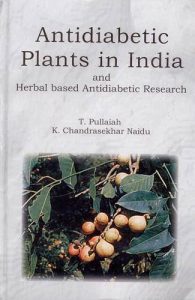

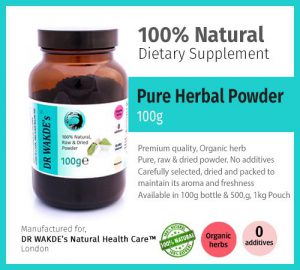
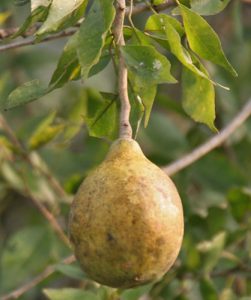



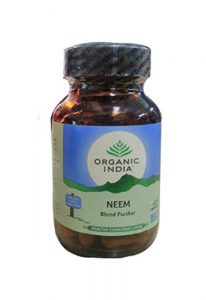
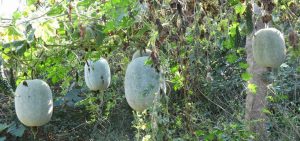
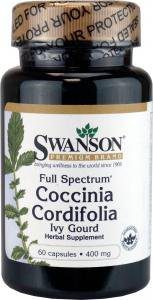
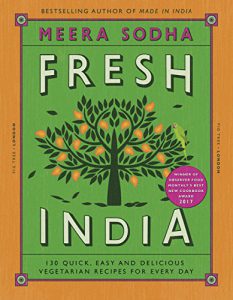
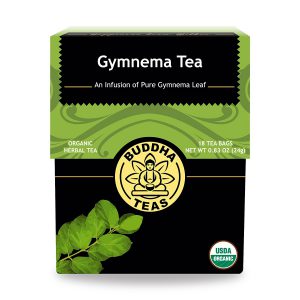
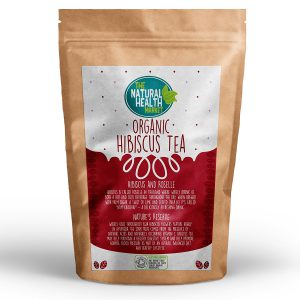


It really is surprising to learn just how many benefits that Chinese medicine can provide for the health of the human body. I particularly like that the article has a section going over how some practices can help with diabetes.
Hi Duncan,
Thankfully, nature offers us plentiful means to nurture and sustain our organs throughout life: There are many healing plants recognized in Chinese herbal medicine for tonifying the liver, plants that purify the lungs, and plants that nourish the heart.
Full of essential energies, essences, and nutrients, herbs are GOD”s great healers, perfect for restoring the balance we need for well-being, healing, and rejuvenation.
I have been diabetic for the past 8 years. My diabetes was in my blood for over 5 months and I didn’t know. I find it hard to breathe and I was going to the bathroom a lot, every 15 minutes. I was always thirsty. My doctor told me if I didn’t go to the hospital right then my heart will stop. He told me the acidity rate in my blood is very high. And all the vitamins were leaked into the urine. And I spent 2 months in the intensive care. My sugar when I discovered it was 450 in a pharmacy. The diabetes was there for over 5 months before I was diagnosed. I was able to get rid of my diabetes condition through the help of MULTIVITAMIN HERBAL CURE my husband bought, https://multivitamincare.org has the right herbal formula to help you get rid of any diabetes disease and cure you totally with their natural organic herbs.